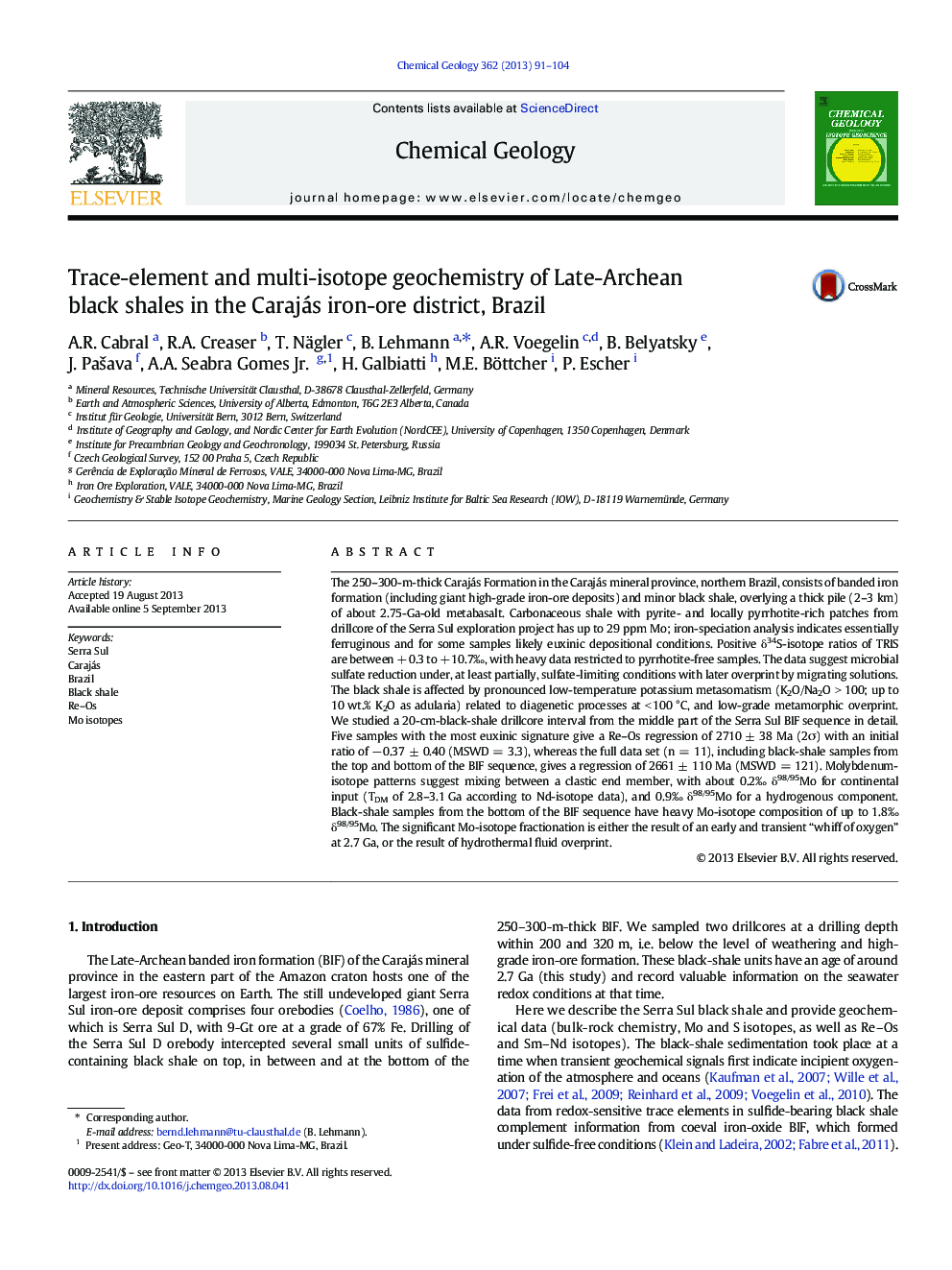| کد مقاله | کد نشریه | سال انتشار | مقاله انگلیسی | نسخه تمام متن |
|---|---|---|---|---|
| 6436754 | 1637608 | 2013 | 14 صفحه PDF | دانلود رایگان |
- Banded iron formation in the Carajás mineral province is associated with black shale.
- Black shale gives a Re-Os regression of 2710 ± 38 Ma (2Ï).
- Black-shale samples have heavy Mo-isotope composition up to 1.8Ⱐδ98/95Mo.
- Transient oxidation of the atmosphere-ocean system is already 200Â Ma before the GOE.
The 250-300-m-thick Carajás Formation in the Carajás mineral province, northern Brazil, consists of banded iron formation (including giant high-grade iron-ore deposits) and minor black shale, overlying a thick pile (2-3 km) of about 2.75-Ga-old metabasalt. Carbonaceous shale with pyrite- and locally pyrrhotite-rich patches from drillcore of the Serra Sul exploration project has up to 29 ppm Mo; iron-speciation analysis indicates essentially ferruginous and for some samples likely euxinic depositional conditions. Positive δ34S-isotope ratios of TRIS are between + 0.3 to + 10.7â°, with heavy data restricted to pyrrhotite-free samples. The data suggest microbial sulfate reduction under, at least partially, sulfate-limiting conditions with later overprint by migrating solutions. The black shale is affected by pronounced low-temperature potassium metasomatism (K2O/Na2O > 100; up to 10 wt.% K2O as adularia) related to diagenetic processes at < 100 °C, and low-grade metamorphic overprint. We studied a 20-cm-black-shale drillcore interval from the middle part of the Serra Sul BIF sequence in detail. Five samples with the most euxinic signature give a Re-Os regression of 2710 ± 38 Ma (2Ï) with an initial ratio of â 0.37 ± 0.40 (MSWD = 3.3), whereas the full data set (n = 11), including black-shale samples from the top and bottom of the BIF sequence, gives a regression of 2661 ± 110 Ma (MSWD = 121). Molybdenum-isotope patterns suggest mixing between a clastic end member, with about 0.2Ⱐδ98/95Mo for continental input (TDM of 2.8-3.1 Ga according to Nd-isotope data), and 0.9Ⱐδ98/95Mo for a hydrogenous component. Black-shale samples from the bottom of the BIF sequence have heavy Mo-isotope composition of up to 1.8Ⱐδ98/95Mo. The significant Mo-isotope fractionation is either the result of an early and transient “whiff of oxygen” at 2.7 Ga, or the result of hydrothermal fluid overprint.
High-grade iron ore in the Carajás mineral province. Late Archean BIF hosts a giant iron ore resource of about 50Â Gt at more than 65% Fe, and black shale units within the BIF allow some conclusions with respect to the oxidation state of the 2.7Â Ga seawater.
Journal: Chemical Geology - Volume 362, 20 December 2013, Pages 91-104
